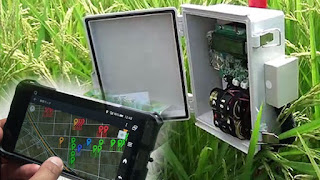Technology:
Responding to the increasing number of flood disasters lately, leading IT companies are accelerating their efforts to develop IT-based disaster prevention systems. NTT Data has developed a system to manage disaster information on such issues as landslide quickly using its cloud technology. Fujitsu made it possible to forecast the place where sewage flood occurs and predict the time when it occurs.
Responding to the increasing number of flood disasters lately, leading IT companies are accelerating their efforts to develop IT-based disaster prevention systems. NTT Data has developed a system to manage disaster information on such issues as landslide quickly using its cloud technology. Fujitsu made it possible to forecast the place where sewage flood occurs and predict the time when it occurs.
The system developed by NTT Data
collects weather data by dividing the target area into one-kilometer square and
displays such data as rainfall on a PC or tablet. Thereby, local residents can
collect data with their terminals as soon as they foresee a possible landside
and flood disaster to sound a red alert well in advance of the arrival of the
disaster. By utilizing cloud computing and smartphones, the company succeeded
in reducing the construction cost of the system to one third of the existing
product to about 100 million yen. It is planning to sell this system not only
in the domestic market but also in foreign markets.
Fujitsu developed a system to
detect damage caused by water flown out from sewage in big rainfall. The system
installs a measurement device with sensor on the sewage pipe at intervals of
about one kilometer and measures level and amount of water in real time. Collected
data will be analyzed and used to predict place and time of flooding to call on
residents to evacuate. The annual running cost of the system is 10 million yen
for every 1,000 measuring devices. The running cost is less than one tenth of
the current level.
Major companies working on the
control of damage caused by global warming
Company name
|
Activities
|
Fujitsu
|
It developed a system to estimate flood of sewage
|
NEC
|
It developed a system to detect a landside disaster
|
NTT Data
|
It developed a disaster management system combined with
elaborate weather forecast. It has already put this system on the market.
|
IBM Japan
|
It developed an integrated system that can manage disaster
information and products in evacuation centers.
|
It is conducting demonstration experiments of a system to predict
flood and torrential rainfall.
|
Some researchers predict that world damages
caused by flood will increase 170 times from 2015 to about 1 trillion dollars in
2050 unless measures are worked out.
What reaction do people show when they get an alarm mail on their smartphones?
An experiment in Osaka that covered more than 8 million people
Restoration activities after the Great East Japan Earhthquake
